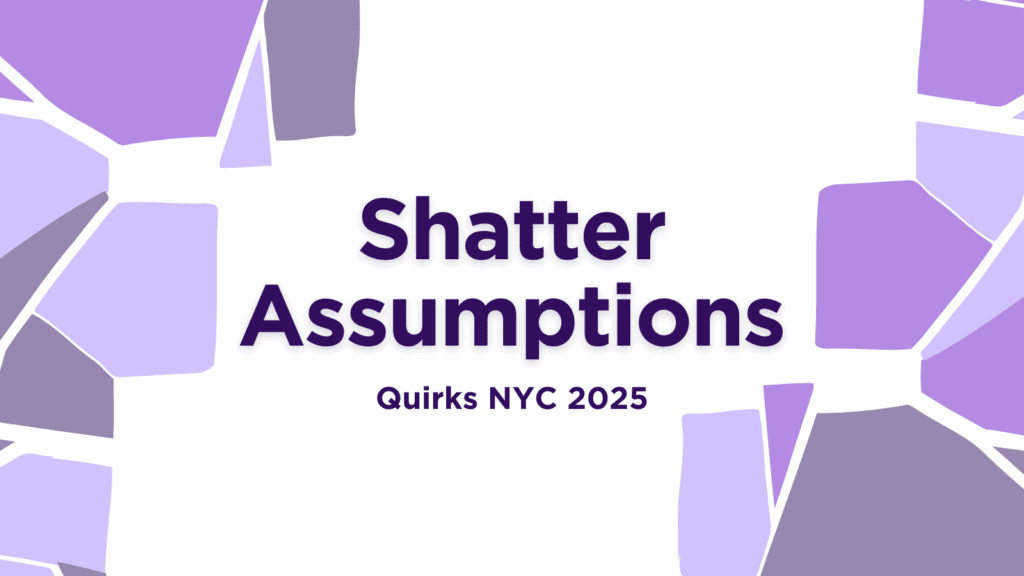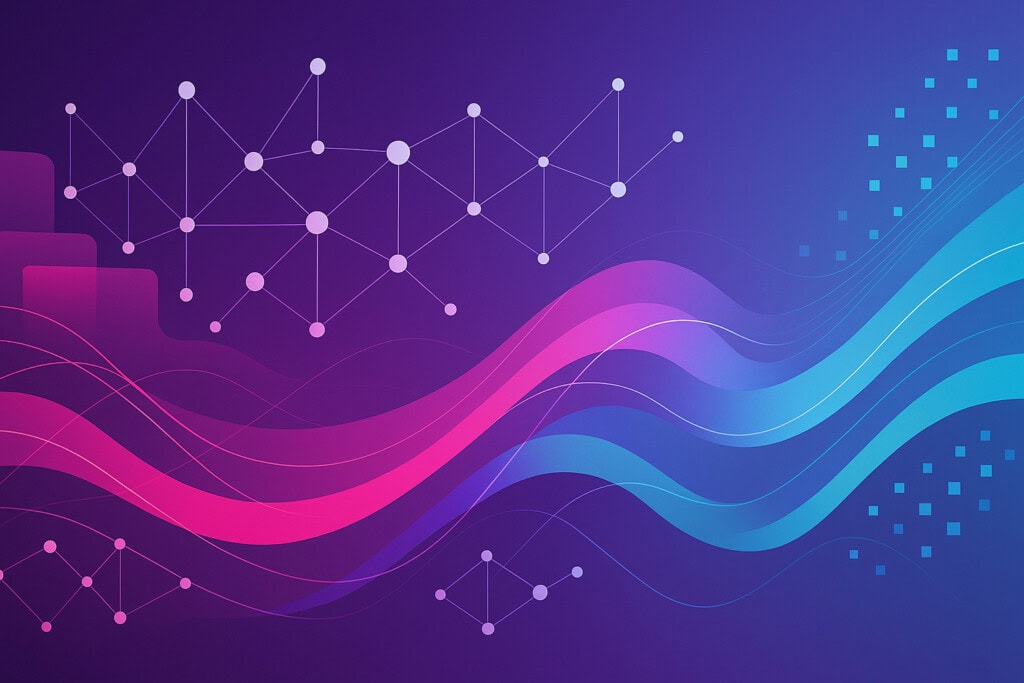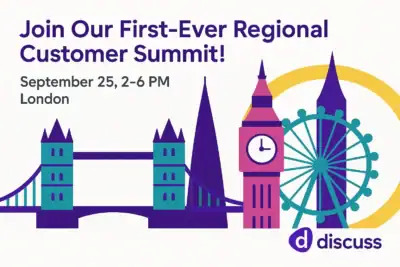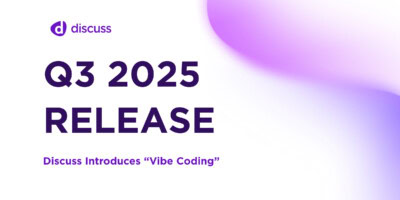When to Use Human-Led vs AI-Led Interviews for In-Depth Customer Feedback

AI is everywhere right now.
It’s in your inbox. It’s on your social media. It’s taking notes in your meetings.
But beyond automating your day-to-day tasks, AI is transforming how you can connect with your consumers—offering new ways to hear real voices, see real emotions, and create real connections with your audiences. It gives you the speed and scale to validate business decisions faster, to hear from a broader set of voices from around the world, and to gather in-depth feedback that ultimately helps you move with greater confidence.
But this doesn’t mean human-to-human conversations are going away. In fact, they’re more important than ever. When the goal is emotional depth, nuance, or building trust, there’s no substitute for real human connection.
So instead of asking whether you should use AI or human-led research, the better question is: When should you use each, and when should you use both together?
Human vs AI isn’t a competition—it’s a collaboration
There’s a lot of strong opinions about AI right now. “AI is replacing humans.” “Humans are irreplaceable.” “You have to pick a side.”
But you don’t. The smartest teams actually aren’t picking a side.
They’re picking the right approach for the right moment and combining the strengths of both, unlocking human understanding at scale without losing depth.
When should you use AI-led interviews?
AI agents aren’t just streamlining tasks, it can automate the entire process of gathering in-depth customer feedback. From finding the right audiences, to conducting interviews, to surfacing rich, actionable insights, AI-led interviews can take you from question to understanding faster than ever.
What’s even more powerful is that teams can inform the AI with external data, like project briefs, past participant responses, industry reports, or even moderator interview styles to tailor how it asks questions, guides the conversations, and delivers insights that are aligned with your unique business objectives.
An AI-led interview approach works especially well for:
- Brief engagements with a large audience
Need to hear from hundreds or even thousands of people, but don’t have the time, the budget, or the skills? When you need to hear from a large group, AI can run real-time conversations with your audiences around the globe and deliver in-depth market insights in minutes. Even small teams can gather feedback from their audiences no matter where they live or what language they speak, without having to add extra headcount or pay for expensive third parties.
- Fast answers to key questions
Tight deadlines and fast-paced projects leave little room for traditional research timelines. With AI in the driver’s seat, there’s no need to wait weeks for insights or deal with the friction of scheduling or coordination. You can launch a study and receive same-day answers as the AI instantly finds and engages your audiences, delivering quick-turn feedback that accelerates decision-making without compromising on quality.
- Deeper insights beyond a typical survey
Surveys can tell you what people do, but not always why. AI goes further by running open-ended conversations and adapting in real-time to ask smarter follow ups to uncover the context and emotions behind what might otherwise be just a checkbox or ranking score—giving you the depth of a face-to-face conversation, at the speed and scale of a survey.
- Anytime participation for respondents
People are more likely to engage when it fits their schedule. With an AI-led interview approach, your audience can engage in conversation whenever it’s most convenient—day or night, weekday or weekend. With conversations that run 24/7 you can keep a pulse on your audiences’ evolving needs and preferences with an always-on insights engine.
- Insights that require greater anonymity with target audiences
For topics that are personal, private, or sensitive, people are often more open and candid when engaging with AI because it creates a non-judgemental space for honesty. Whether it’s health-related, financial stress, or maybe a stigmatized topic, AI-led conversations help unlock truths that might not have been shared with a human interviewer.
Check out how AI is helping people speak honestly about their healthcare experiences in our Chief Growth Officer, Jim Longo’s, latest Forbes article.
AI-led interviews have created an opportunity for human connection that’s fast and far-reaching. Check out our latest blog to learn how AI agents are redefining global human understanding.
What are human-led conversations best for?
AI can do incredible things, but for certain situations, human-led conversations deliver what technology can’t. These are the moments when real human connection is irreplaceable especially when it comes to capturing emotion, nuance, and building deep relationships and trust with your audiences.
Human-led conversations are especially great for:
- Broad exploration with unclear goals
When the objective is open-ended or undefined, humans are better equipped to explore the unknown. Humans can draw from experience, follow intuition, and pivot the conversation to follow unexpected threads or make judgement calls in the moment.
- Uncovering nuanced insights
Some insights live between the lines. Humans are uniquely skilled at picking up on subtleties, hesitations, contradictions, offhand comments, and digging deeper. They also bring cultural understanding—which is essential when you’re engaging with audiences across cultures, markets, and regions.
- Emotional depth and nuance
While AI is great at identifying emotional sentiment, humans can empathize in real time. They can sense hesitation, tension, or passion—and know how to gently press, rephrase, or lean in with empathy and compassion. These moments often unlock deeply emotional insights that might have gone unnoticed or unpursued by AI alone.
- Real-time adaption and rapport building
Strong relationships are built on trust. As humans, we will often share humor, match the tone of someone we’re speaking with and bring a deep level of empathy that technology can’t replace. And when something unexpected arises, like a story worth exploring or a pivot in direction, only a human can sense that shift and run with it in a meaningful way. AI is great at following logic, humans are great at following feelings.
- Non-verbal communication is key
Some of the richest insights come without words. A pause. A change in facial expression. A shift in posture. These non-verbal cues provide critical context. Humans don’t just hear the words, they have the situational awareness to pick up on these signals and to respond with understanding.
So, when the stakes are high, you need emotional depth, or the path is unclear—human-led conversations give you the nuance and empathy AI can’t yet replicate.
So… which should you use?
Both.
It’s not “Team AI” vs. “Team Human.” It’s Team Understanding. And the best understanding comes from blending the strengths of both.
Let’s say you’re launching a new global product. You use AI-led interviews to gather directional feedback from 200 people across five countries in just a few days. Then you use human-led conversations to dig into emotional needs with your target audience to dial in your positioning.
Or you’re testing campaign messaging. Let AI get the fast thumbs-up/thumbs-down signals from hundreds of respondents. Then use a human-led approach to explore why something hits, or misses, and how to make it land stronger.
AI gives you scale and speed.
Humans give you depth and nuance.
Together you get deeper human understanding—so you’re not just building better products or campaigns. You’re building relationships and trust. And that’s what drives real growth.
A quick guide for when to use what
| Scenario | AI-Led Interviews | Human-Led Conversations |
| Need quick feedback across multiple global markets? | ✅ | ❌ |
| Exploring new brand positioning? | ❌ | ✅ |
| Testing ad copy or campaign messaging? | ✅ | ✅ |
| Discussing a sensitive topic where anonymity is important? | ✅ | ❌ |
| Wanting to build trust and rapport with your audience? | ❌ | ✅ |
| Need to scale fast with a small team? | ✅ | ❌ |
Making human understanding accessible for all
You don’t have to choose between human-led conversations and AI-led interviews. The real power lies in combining them.
AI gives you speed and scale enabling more teams across your organization to stay close to their audiences in a way that wasn’t possible before. Product teams can test ideas faster. Marketers can test messaging and launch campaigns more confidently. User experience teams can keep a real-time pulse on sentiment. And insights professionals are freed up to focus on more strategic work. Meanwhile, human-led conversations bring the emotional richness, trust-building, and nuance that only real people can provide.
Together, they create a smarter, more scalable approach to understanding your customers—one rooted in what people truly think, feel, and need.
For teams who want the best of both worlds, Discuss makes it easy to move from AI-led interviews for quick-turn customer feedback to human-led conversations for deeper, more nuanced understanding, or a perfect blend of both—all within a single platform.
Talk to an expert today to learn how you can seamlessly combine AI-led and human-led customer feedback.
Ready to unlock human-centric market insights?
Related Articles

Garbage at Scale: Why AI-Only Qual Research Misses the Mark
At Quirks NYC, Discuss Co-Founder Jim Longo took the stage with Stan Sthanunathan, a legend in the insights industry and…
At Quirks NYC, Discuss Co-Founder Jim Longo took the stage with Stan Sthanunathan, a legend in the insights industry and…

From Research Projects to Insight Flows: Vibe Coding Is Rewiring the Way We Learn From Customers
By Adam Mertz, Chief Growth Officer at Discuss In my first post in this series, I explained vibe coding: originally…
By Adam Mertz, Chief Growth Officer at Discuss In my first post in this series, I explained vibe coding: originally…

What Is Vibe Coding for Market Insights? And Why It Matters for Modern Marketers
By Adam Mertz, Chief Growth Officer at Discuss Let’s be honest. Most marketers don’t wake up thinking, “I need to…
By Adam Mertz, Chief Growth Officer at Discuss Let’s be honest. Most marketers don’t wake up thinking, “I need to…



